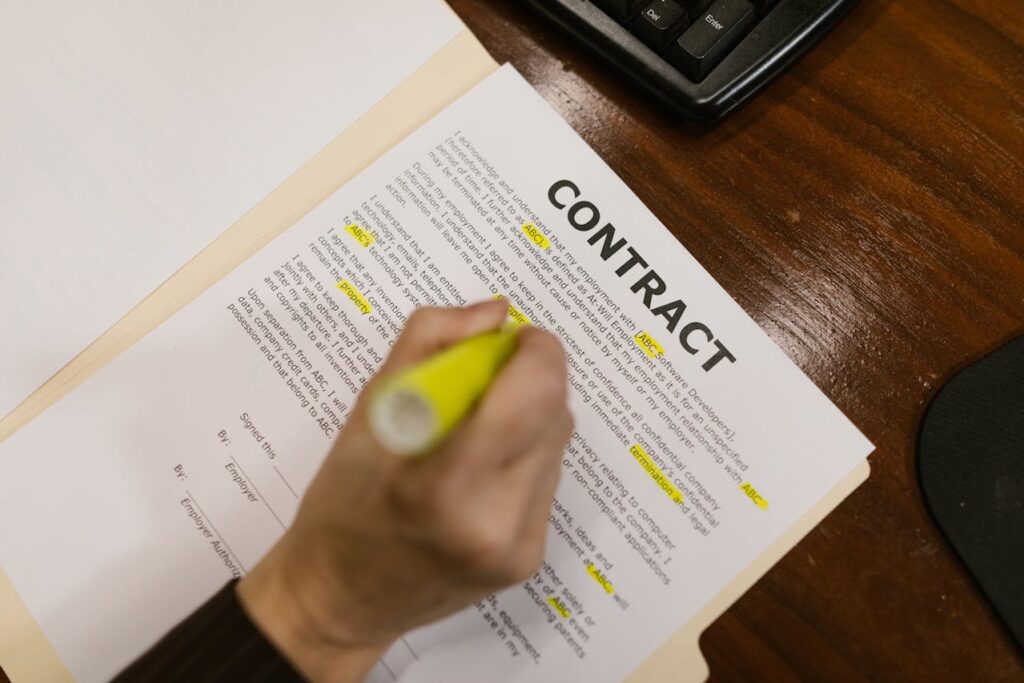Copyright & Trademark Infringement and Cease and Desist Letters – What to Do & How to Respond

Intellectual Property is a term that is used to describe a range of legal rights that attach to certain types of information and ideas. These rights usually fall into two categories:-
(i) Registered Rights – these include patents, trademarks and registered designs.
(ii) Unregistered Rights – these include copyright, unregistered design rights, rights in unregistered trademarks and confidential information
Cease & Desist Letters
What are They?
Where a party owns, or believes it owns, some intellectual property such as a trademark or copyrighted work, they will usually take steps to try to protect their rights in this work. This may include sending a letter of claim to an infringing party as a precursor to a court claim, otherwise known as a ‘Cease & Desist’ letter, setting out what rights they own, setting out evidence of those rights and requesting that the infringing party:-
- stops/ceases to carry on those infringing activities;
- does not continue/desists from carrying on those infringing activities;
- the infringing party destroy any remaining infringing materials; and
- provide written undertakings (contractual promises) in relation to future conduct, damages and costs.
What do I do?
Don’t ignore it. Often cease and desist letters form the basis of a claim that will be made to the High Court and/or an application for an urgent injunction that a party stop carrying out certain activities and pays damages and costs. Such applications/claims can incur significant costs, sometimes upwards of £100,000, which the winning party can seek from the losing party.
Just because one party thinks their rights are being infringed doesn’t necessarily mean they’re correct. There may be scope to defend any claim so you should seek expert legal advice before responding.
What should a response look like?
- Consider the Allegations – where a letter has been received alleging breach of another’s intellectual property rights it is important to assess what is being alleged. Is the intellectual property a trademark? If so, is it registered? If not, it may not be enforceable. Likewise, if the alleged breach is over another’s copyrighted work (which is an unregistered right), has the sender provided enough evidence that such a right exists, what that right subsists in and that they own the right (i.e. that they were the original author/creator). This is a large burden to prove and often intellectual property claims can fall at this first hurdle. Often cease and desist letters will include claims in “passing off” – a claim made on the basis that someone else is benefiting from selling goods/services using the goodwill of the claimant (either by using a name, mark or style of the claimant in selling the goods/services). In this instance, the Claimant will need to prove that (a) there was goodwill attached to the goods/services being sold;
(b) the Defendant made a misrepresentation to the public leading or likely to lead them to believe the goods or services were the goods and services of the Claimant; and
(c) the Claimant suffered loss.
Typically this can be selling goods and services using a very similar trading name and/or branding.
- Evaluate the Infringement – if the rights set out within the letter are valid the next step would be to evaluate what infringement, if any, has taken place. Each type of intellectual property right has a different test for infringement and each infringement may have specific defences against an allegation for infringement. For example, some permitted acts do not infringe copyright under the Copyright, Designs and Patents Act 1988. Where the intellectual property right exists but no infringement has taken place, the cease and desist sender would not have grounds to bring a claim.
- An Unjustified Threat – Under the Intellectual Property (Unjustified Threats) Act 2017, if an owner of a patent, trademark and/or registered design makes an unjustified threat of intellectual property infringement, the aggrieved party can counterclaim for an order declaring the threat as unjustified and damages for losses sustained as a result of the threat.
Intellectual property rights are only as good as the holder’s ability and determination to enforce them by legal action. Very often the costs of such an action can outweigh any benefit or loss to the parties. Early advice from a solicitor experienced in these disputes can minimise costs and risks. At Helix Law, we can give Claimants or Defendants the early advice, risk assessment and robust advice necessary to minimise costs and maximise outcome.



